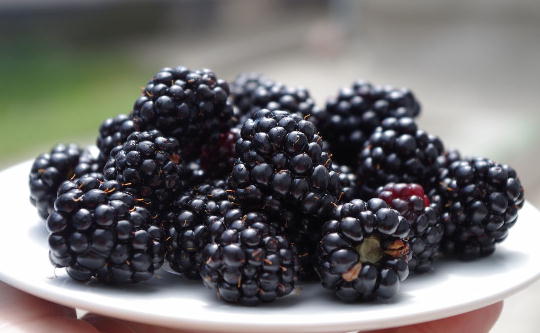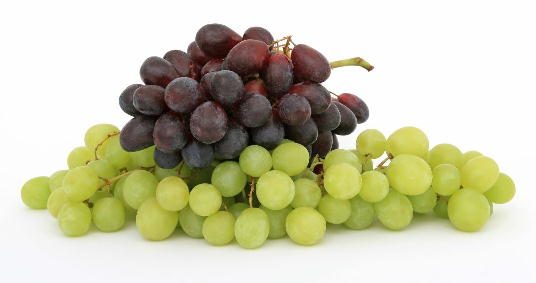Fruiting plants, fresh wholesome fruit grown at your home
Fruiting plants you can grow yourself
You can grow your own fruiting plants. More and more people are getting fed up with buying fruits that have been grown somewhere they’ve never heard of. They’ve been treated with all kinds of chemicals. Freshness becomes a relative term. Now you can grow your own and have the freshest possible fruits.
We have several selections of fruiting plants that you can actually grow in your own yard. Some of them can even be grown in your front yard. They make nice landscape plants. Just watch for that neighbor that sneaks over for a fresh bite or two.
Blueberries, Blackberries, Raspberries, Grapes, Haskaps, and even Figs. I propagate these and also buy in some to handle the demand. These are all hardy for this area so you can enjoy success in your yard.
Also, keep your eyes open for some new additions to the inventory. I am always looking for varieties to add. Something else to think about, Black Chokeberry (Aronia melanocarpa), produces edible berries in fall. Another thing that gets added in sometimes is fruit trees.
Some of the Fruiting Plants we may have available
Blueberries

Bluecrop
Vaccinium corymbosum ‘Bluecrop’
5 to 7 feet high and 5 to 7 feet wide
Full sun
A mid-season berry that produces large crops. Very crack and disease resistant. Self-pollinating, but will do better with a cross-pollinator. Fall colors are shades of red.
Duke
Vaccinium corymbosum ‘Duke’
5 to 7 feet high and 5 to 7 feet wide
Full sun
Late-blooming but early-season berry that produces large sweet berries. Self pollinating, but will do better with cross-pollinator. Fall colors are yellows and orange.
Sunrise
Vaccinium corymbosum ‘Sunrise’
5 to 6 feet high and 5 to 6 feet wide
Full sun
Late-season fruiting with large berries. Dark blue berries without scar and fine flavor. Self-pollinating, but will do better with cross-pollinator.
Sweetheart
Vaccinium corymbosum ‘Sweetheart’
5 to 6 feet high and 3 to 4 feet wide
Full sun
Early-season producer of a large crop of sweet and juicy berries. Self-pollinating, but will do better with cross-pollinator.
Jersey
Vaccinium corymbosum ‘Jersey’
6 to 8 feet high and 6 to 8 feet wide
Full sun
Late-season berry that produces smaller sized, light blue berries. Self-pollinating, but will do better with cross-pollinator. Fall colors are attractive shades of red.
Elliott
Vaccinium corymbosum ‘Elliott’
4 to 6 feet high 4 to 6 feet wide
Full sun
A very late-season berry that produces smaller sized berries. Self-pollinating, but will do better with cross-pollinator. Fall colors are attractive shades of yellow-orange to reddish-purple.
Chandler
Vaccinium corymbosum ‘Chandler’
4 to 5 feet high and 4 to 5 feet wide
Full sun
Mid- to late- season extra large berries that sweet and juicy. Self-pollinating, but will do better with cross-pollinator.
Pink Lemonade
Vaccinium corymbosum ‘Pink Lemonade’
4 to 5 feet high and 4 to 5 feet wide
Full sun
Late summer fruiting with pink, sweet with slightly tart berries. Traditional taste with a citrusy twist, resembling lemon.
Blackberries

Triple Crown
Rubus fruticosus ‘Triple Crown’
5 to 6 feet high and 3 to 4 feet wide
Full sun
Thornless, semi-erect canes produce large glossy black firm fruits in mid-summer. Combination of sweet and tartness great for pies and baking.
Black Satin
Rubus sub. Rubus Watson ‘Black Satin’
5 to 6 feet high and 3 to 4 feet wide
Full sun
Thornless, semi-erect canes produce large sweet and juicy berries in mid-summer. Deep blue-black in color.
Arapaho
Rubus fruticosus ‘Arapaho’
5 to 8 feet and 4 to 5 feet wide
Full sun
Thornless, earliest producer of firm delicious berries. Large fruits with smaller seeds. Upright canes.
Dewberries
Rubus flagellaris
1 to 3 feet high and 4 to 8 feet wide
Full sun
Very thorny bramble vines that produce delectible black fruits. Early predescessor to blackberries. They don’t keep well so must be used fresh.
Raspberries

Heritage
Rubus idaeas ‘Heritage’
5 to 8 feet high and 3 to 4 feet wide
Full sun
Everbearing red, large sweet berries. Upright canes produce 2 crops. Moderate in July, heavy in September to frost.
Anne
Rubus idaeas ‘Anne’
4 to 5 feet high and 3 to 4 feet wide
Full sun
Everbearing sunshine yellow colored berries with a hint of apricot. Large sweet berries that also freeze well.
Caroline
Rubus idaeas ‘Caroline’
4 to 5 feet and 3 to 4 feet wide
Full sun
Everbearing red, large sweet berries. Upright canes produce 2 crops. First in July, second in September to frost. More tolerant of root rot than Heritage.
Boyne
Rubus idaeas ‘Boyne’
4 to 6 feet high and 2 to 3 feet wide
Full sun
Early-season red, produces abundant crop of medium sized fruits with rich, sweet, old-fashioned flavor. Freezes well and very cold hearty with less damage.
Nova
Rubus idaeas ‘Nova’
4 to 6 feet high and 3-4 feet wide
Full sun
Mid-season red, produces high yields of medium to large fruits. Fruits store well and great for all around eating and baking.
Jewel
Rubus occidentalis ‘Jewel’
4 to 5 feet high and 2 to 3 feet wide
Full sun
Mid-season black, produces large glossy berries of good quality and flavorful. Great for eating fresh or baking. Remove cane to ground after picking fruits.
Grapes

Canadice
Vitis labrusca ‘Canadice’
15 to 20 feet high and 3 to 5 feet wide
Full sun
Seedless red, early season ripening of clusters. Hint of spiciness. Good for snacks, jelly, juice, wine.
Niagara
Vitis labrusca ‘Niagara’
15 to 20 feet high and 3 to 5 feet wide
Full sun
White grape good for table fresh to juice. Ripens earlier than Concord. Known as White Concord.
Haskaps (Honeyberries)

Czech 17
Lonicera caerulea ‘Czech 17’
5 to 6 feet high and 3 to 4 feet wide
Full sun
Medium-sized fruits in early summer. Long flowering period early in the season makes it a great pollinating partner for other varieties.
Indigo Gem
Lonicera caerulea ‘Indigo Gem’
5 to 6 feet high and 3 to 4 feet wide
Full sun
Extra sweet fruits in summer with a chewy texture. Very fragrant blooms and cold hardy to Zone 2. Needs a pollinator.
Indigo Treat
Lonicera deulis kamtschatica ‘Indigo Treat’
4 to 6 feet high and 4 to 6 feet wide
Full sun
Fragrant blooms in early spring give way to loads of sweet fruits in summer. Good for snacking and baking. Needs a pollinator.
Boreal Beauty
Lonicera caerulea ‘Boreal Beauty’
4 to 5 feet high and 4 to 5 feet wide
Full sun
Mid- to late-season blooms lead to very large fruits in summer. Good for snacking or baking. Needs a pollinator.
Cinderella
Lonicera edulis ‘Cinderella’
2 to 4 feet high and 2 to 3 feet wide
Full sun
Ripens in late May. Large bluish-purple berries with wild blueberry taste tinged with black current. Needs a pollinator to produce fruit.
Boreal Beast
Lonicera caerulea ‘Boreal Beast’
4 to 5 feet high and 4 to 5 feet wide
Full sun
Ripens in June after april blooms. Not as pretty as Beauty, but very tasty. Good for snacking or baking. Good pollinator for other Boreals.
Boreal Blizzard
Lonicera caerulea ‘Boreal Blizzard’
4 to 5 feet high and 4 to 5 feet wide
Full sun
Blooms late and fruits in mid-summer with the largest fruits. 2-3 times larger than others. Large harvests also. Needs a pollinator.
Aurora
Lonicera caerulea ‘Aurora’
4 to 5 feet high and 4 to 5 feet wide
Full sun
Blooms during April and fruits ripen in late June. Higher sugar content makes them tastier. Easy to pick berries in large quantities.
Tundra
Lonicera caerulea ‘Tundra’
3 to 5 feet high and 3 to 5 feet wide
Full sun
Blooms in early spring and fruits in summer. Smaller plants with bigger sized berries. Fruits have firm skin and handle well.
Figs

Chicago Hardy
Ficus carica ‘Chicago Hardy’
15 to 30 feet high and 15 to 35 feet wide
Much smaller if potted
Full sun
Fruits on new growth. Plant will usually die back to ground in our colder climate. Growing them in large pots enable them to be brought indoors for winter. Special protection for planted trees for winter cold is effective.
